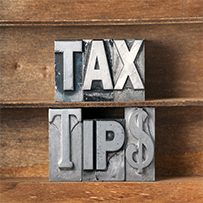
Nine Factors to tell if you have a Business or Hobby
The IRS may question taxpayers regarding whether an activity is a business or a hobby. If the activity is not engaged in for profit, it is subject to the hobby loss rules in Sec. 183, and its deductible expenses are limited to the amount of income it generates, further subject to a threshold of 2% of adjusted gross income (AGI) as a miscellaneous itemized deduction.
Regs. Sec. 1.183-2(b) lists nine factors for determining whether a taxpayer engages in an activity for profit:
1. How the taxpayer carries on the activity. A tax preparer would first want to look for how the taxpayer handles the entity, ensuring that he or she is conducting all activities in a businesslike manner. The taxpayer can establish this by maintaining separate personal and business bank accounts, keeping records and books, and acting like similar profitable, operational entities.
2. The taxpayer’s expertise. A business operator should have extensive knowledge of his or her profession or activity, showing that he or she has studied accepted business methods and sought advice from experts.
3. The taxpayer’s time and effort in carrying out the activity.
Example. J manages a janitorial service, and his prime contract is with a fast-food chain. J also teaches three days a week at a local university and can clean the restaurants only late in the evening after closing or early in the morning before opening. This causes him to devote much of his personal time and effort to cleaning, which could indicate that he entered into and continued it with the actual and honest objective of making a profit.
4. An expectation that assets used in an activity, such as land, may appreciate in value. Regs. Sec. 1.183-2(b)(4) says such appreciation may be considered in lieu of current profits.
5. The taxpayer’s success in other activities. Even if the taxpayer’s activity is currently unprofitable, it may be for-profit if the taxpayer has been able to convert other activities from unprofitable to profitable in the past, especially ones similar to the current activity.
6. The taxpayer’s history of income or losses from the activity. The economy plays a big role in how much business J, the hypothetical janitor, can generate and keep. Since J’s main contract is with a fast-food chain whose budget fluctuates with the economy, he sometimes incurs losses, which alone are not conclusive. However, a long series of losses warrants consideration, and sustained earnings indicate a for-profit activity.
7. The relative amounts of the profits and losses. Regs. Sec. 1.183-2(b)(7) states, “The amount of profits in relation to the amount of losses incurred, and in relation to the amount of the taxpayer’s investment and the value of the assets used in the activity, may provide useful criteria in determining the taxpayer’s intent.” However, the presumption of profit motive in Sec. 183(d) says that if an activity has gross income for three or more of the last five years that exceeds the deductions attributable to the activity, the activity generally is presumed to be for-profit.
8. The taxpayer’s financial status. Although other substantial sources of income to the taxpayer do not preclude an activity from being considered for-profit, they may indicate the activity is a hobby. In the example, J also teaches three days per week at a local university during the academic year. He is not paid when school is not in session. During those months, he relies solely on his janitorial business for income. J’s janitorial services can be considered a for-profit activity whether or not school is in session.
9. Whether the activity provides recreation or involves “personal motives.” This may, with other factors, indicate lack of a profit motive. J’s janitorial service entails cleaning grills, mopping floors, and scrubbing public bathrooms. The activity lacks recreational appeal, helping J’s business to be seen as a for-profit activity rather than a hobby.
After reviewing the records and previous tax returns for an activity, a tax preparer can determine whether the activity is a hobby or a for-profit activity based on these nine factors. However, taxpayers must understand that no single defining pattern or factor is conclusive and that all the facts and circumstances must be considered. If an activity is deemed a hobby, its income is reported as other income on line 21 of Form 1040, U.S. Individual Income Tax Return, and the related expenses are reported as miscellaneous itemized deductions on Schedule A, Itemized Deductions, subject to the 2%-of-AGI floor.


